I have called this principle, by which each slight variation, if useful, is preserved, by the term of Natural Selection. –Charles Darwin
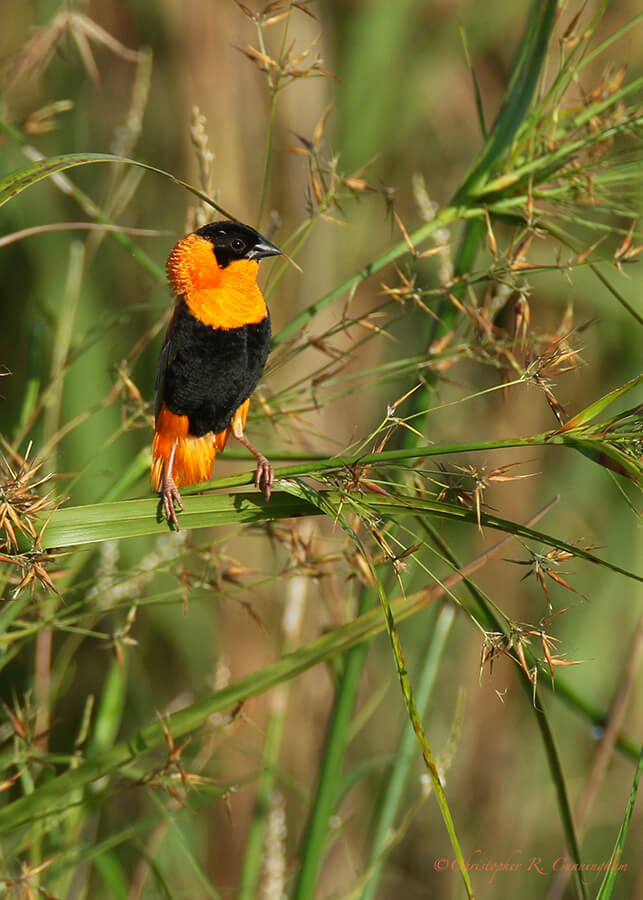
On our most recent visit to Buffalo Run Park in Missouri City (8/6/16) it seemed that some of the Orange Bishops (Euplectes franciscanus) were a different color than during previous visits. In mid-July, I thought that all the males were orange and black (with a muddy orange-brown mantle) and a hint of red in the throat.
The redness of the throat was heightened when the birds went into display mode as you can see in the images immediately above and below. The red color could be structural (due to the physical optics of the feather), a result of pigmentation, or both. It seems likely that this red color could be in part structural, like the colors of a hummingbird gorget, but for reasons discussed below it seems unlikely that the red is due to this alone.
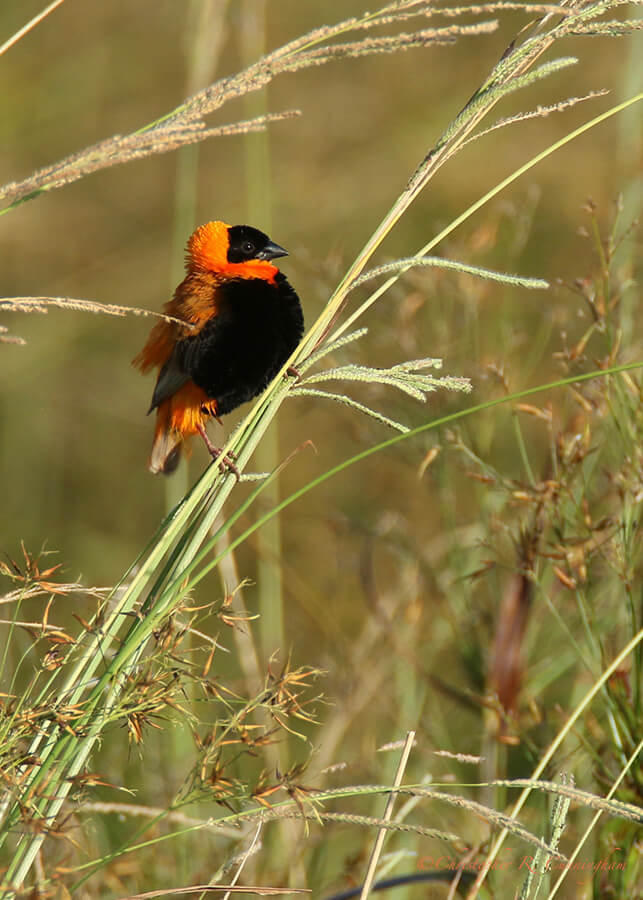
On August 6, I saw a number of birds that were clearly more red than orange. Because the difference was so striking, I wondered if these redder birds were actually a different species, namely the Southern Red Bishop (Euplectes orix). Some quick research revealed that the Southern Red Bishop is not kept as a pet for some reason and thus not likely to be found in pet shops, the ancestral source of the Buffalo Run birds. Also, although very similar in general appearance to the Orange Bishop (aka, Northern Red Bishop), the black face mask of the southern species extends around the bottom of the lower bill into the throat. The birds at Buffalo Run Park, then, are clearly the northern species.
Color in birds is a fascinating and complex subject involving some rather difficult physics and biochemistry. Color can be a function of both pigmentation and physical optics (interference and diffraction) of light as it passes through the feathers. Reflection from lighter feathers beneath the outer feathers is also implicated in some avian colors. Interestingly, the color of birds can be affected by diet, especially in the case of yellows, reds, and oranges which are derived from ingested carotenoid compounds.
As a test of whether the red color in the redder Orange Bishops was structural, I was sure to capture images of the birds facing into and away from the sun (below). I would expect differences in appearance if the color was structural, much as a hummingbird looks different when illuminated from different angles. I noticed no change in color due to direction of light in the case of the redder bishops. Likewise the orange Orange Bishops appeared very similar facing into and away from the sun, with the exception of the throat. The two birds above are facing into the sun, and the bird in an earlier post was facing away from the sun.
For these reasons, I suspect that pigmentation is involved in the red of these birds. But this begs a number of other interesting questions. If carotenoid pigments are often involved in the warm colors, and these compounds are found in the diet of birds, how is it that bishops look the same in Africa as Texas? Surely they are not eating exactly the same plants. Or are they? Is it natural for bishops to redden into a deeper red later in the breeding season? If so, is this due to diet or genetics or both? Are the red versus orange birds simply a matter of individual variation, the stuff of natural selection? A few hours chasing African birds around on a sweltering Texas morning has provided more questions than answers.
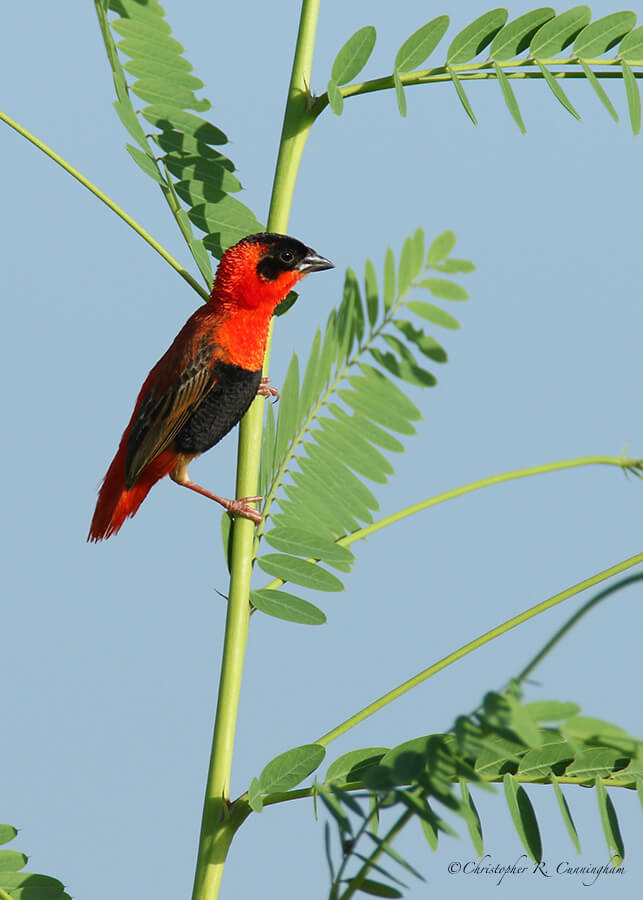
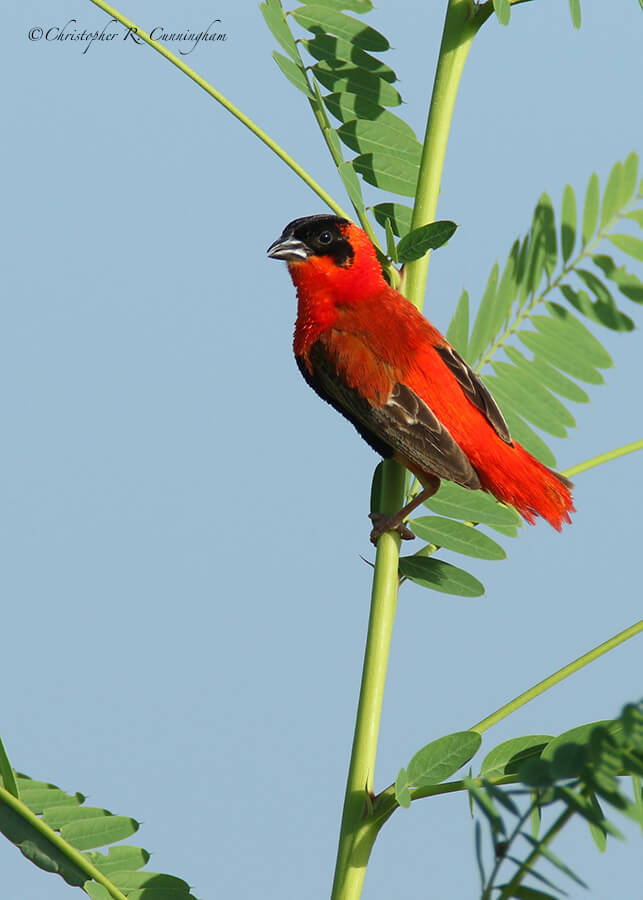
Finally, although the females are very sparrow-like in appearance and much more shy and difficult to photograph than the males, I made several attempts to maneuver close to them for an image. I would note that, ultimately, color in breeding male birds is all about female breeding preference. Buffalo Run Park could be natural laboratory for the study of how invasive species adapt to a new environment, specifically breeding in a new context. I foresee a master’s thesis for some budding young ornithologist.
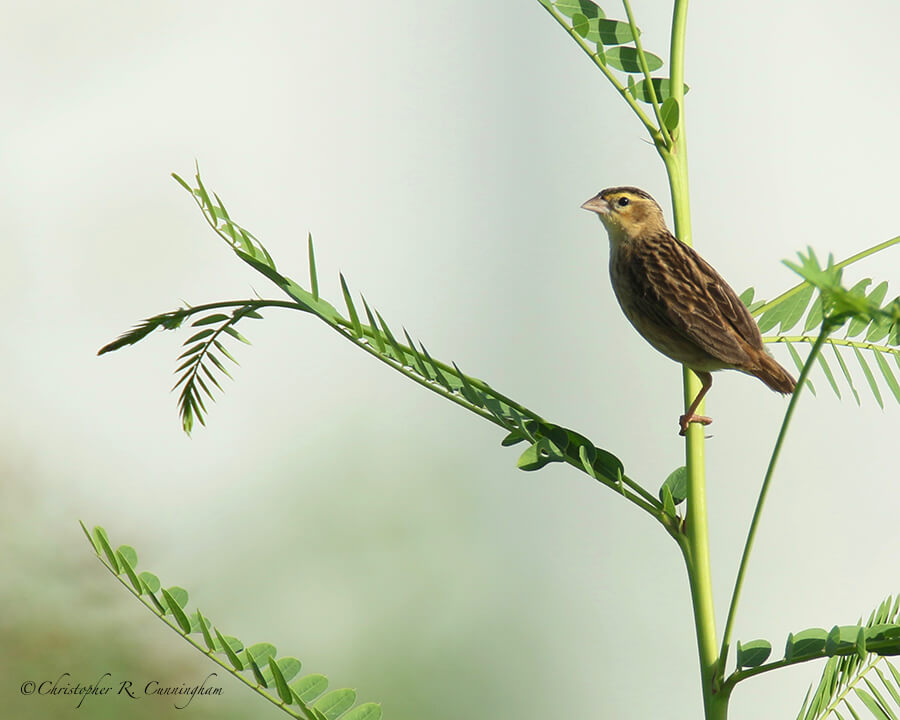
©2016 Christopher R. Cunningham. All rights reserved. No text or images may be duplicated or distributed without permission.